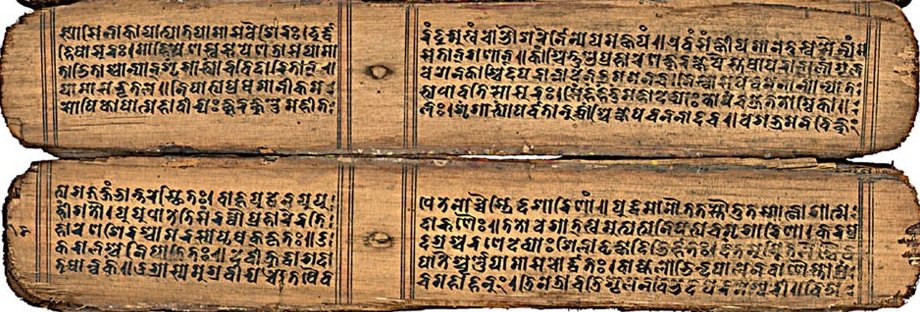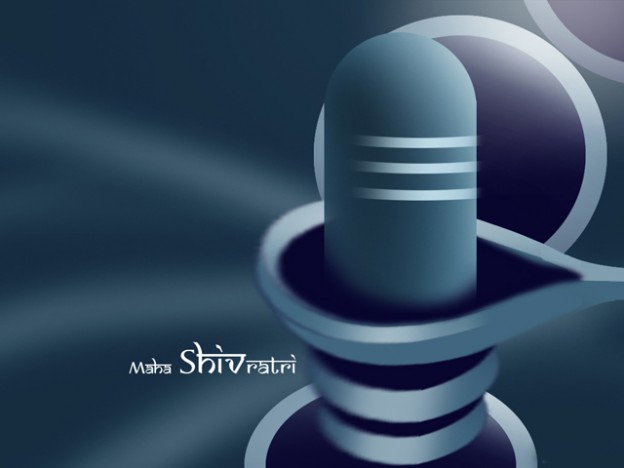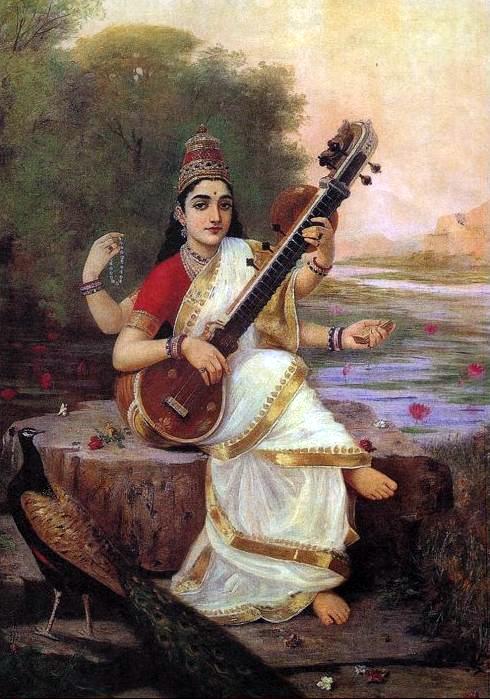
Indic culture is one of the World’s most ancient and vibrant. From its sophisticated literary canon to its beautiful music and dance to its ornate fashions, Indic Civilization’s high culture and folk culture are second to none. High Culture encompasses the following Sections:
Classical Language
The Classical Languages of Indic Civilization are above all Sanskrit, as well as Tamizh and Prakrit/Pali. While there are numerous regional bhashas of great antiquity and accomplishment, these three languages are the only ones of great antiquity and self-sustained canons (Pali is itself considered a form of Prakrit). Indeed, Sanskrit truly remains the outstanding contribution of Indic Civilization to world lit and linguistics.
With its unparalleled, context-free grammar (codified in the Ashtadyayi by Panini) and its peerless poets and philosophers (from Kalidasa to Sankaracharya), the devabhasha is truly its elite language of romance, poetry & high culture.
*It is important to note that while Western academics use Classical to refer to “dead” languages like Ancient Greek and Latin, when we use Classical here we mean Saastriya. Saastriya’s definition is “that which comes from Sastra“.
Sastras our sacred texts of knowledge, not only religious in nature, but even scientific, artistic, mathematical, literary, etc. Sanskrit is used around the world even today, not only by traditional scholars and purohits, but even as a spoken language in villages such as Mattur. And of course, Tamizh is very much alive as any passionate speaker of that language will assert. Classical though it may be, our sacred tradition is very much alive and uniquely unbroken. [2]
References:
- Kota, Venkatachalam Paakayaji (Pandit). http://trueindianhistory-kvchelam.blogspot.com/2009/07/sanskrit-is-most-ancient-and-parent.html
- Malhotra, Rajiv. Geopolitics and Sanskritphobia. http://creative.sulekha.com/geopolitics-and-sanskrit-phobia_103686_blog. 2005
Pradesa Bhasha (Regional Languages):
Bharatavarsha was traditionally divided into 5 parts (the Five Indies)
Madhya desa ( Central), Uttarapatha (North), Dakshinapatha (South), Prachya (East), Pascha (West). While historically Maharashtra would be considered South (as it is South of the Vindhyas), and Malwa as West, we have made minor alterations to match the cultural configuration of the present time.
North
Hindi (Avadhi, Braj Bhasha, Bhojpuri, Maithili, Dogri, Pahari, etc )
Kashmiri
Nepali
South
Kannada
Konkani
Malayalam
Sinhala
Tamil
Telugu
Tulu
East
Assamese
Bengali
Odia
Mizo
Khasi
Garo
West
Punjabi
Rajasthani (Marwari & Mewari)
Gujarati
Marathi
Sindhi
References:
- SarDesai, D.R. India: The Definitive History. Westview: Boulder,Colorado. 2008.p.10-12
Literature
Historical India’s Literary tradition may spring forth from its profound Dharmic Scripture, but it has spread to virtually every facet of life, and runs the gamut from poetry and prose to fiction and fantasy.
Vedic/Pauranic
India’s Classical Literature Traditions indubitably begins with its unmatched Sanskrit Literary Heritage. By some counts of Indologists, there are some 30 million Sanskrit Texts on various subjects: some political, some religious, some scientific, some literary, some romantic, some historical, and many not even properly cataloged.
Personalities
Saptarishis
Yajnavalkya
Vaivasvata Manu
Vasishta
Gautama
Valmiki
Veda Vyasa
Tolkappiar
Important Texts
The Vedas (Chatur Veda, traditionally transmitted orally. Later written)
Upanisads
Srimad Bhagavatam
Ramayana
Mahabharata
Puranas (18 Major and 18 Upapuranas)
Dharmasastra
Tolkappiyam
References:
- Das, Sisir Kumar. A History of Indian Literature, 500-1399: From Courtly to the Popular. New Delhi: Sahitya Akademi. 2005. p.75
- Kale. M.R. Niti and Vairagya Satakas. New Delhi: MLBD. 2006
- Malhotra, Rajiv. Sulekha. 2002. http://creative.sulekha.com/the-axis-of-neocolonialism_103313_blog
- Basham, A.L. The Wonder that was India. New Delhi: Rupa.1999
Classical

Upama Kalidasasya Bharaver Arthagauravam
Dandinah Padalalityam Maghe Santi Trayogunah! [1]
The importance and impact of this aspect of Indian Civilization cannot be minimised. After all, the stories, heroes & heroines, great romances, beautiful places, and wondrous accomplishments of yore are all preserved in and passed on via the literature of a people. It is this, the documentation of the sum total of a civilization’s life, society, and above all, values that connects the young with the old, and for those yearning for star-crossed sringara, connects lover with lover as well. However, to properly appreciate the nuances of a sophisticated culture’s Literary Accomplishments, one must first understand the structural theory it is founded upon.
Literary theory in general and Poetics in particular were highly developed and sophisticated in ancient India. Indeed, it would be difficult to find a peer culture or civilization in this regard. This is apparent not only in the cultivation of the world famous Ancient Indic Nava Rasa theory, but also in the explication and categorisation of works of fiction and drama, romance and comedy, poetry and prose, elite and common.
Samskrtam is the name of the celestial language which has been used by great sages; Prakrtam is divided into many ways as Tadbhava, Tatsama and Desi.
In such language is the ocean of gemlike saying Setubhanda and other works.” [7,17]
While many names are famous to us already, such as Kalidasa and Vatsyayana, what is less commonly known is the linkage many of these figures have with more modern writers. For example, Mrigarajalaksana Bhatta Narayana is thought to be a native of Kanyakubja (Kannauj). He is said to have been invited by the King of Bengal Adisura to settle there. Bengali tradition holds him to be the chief ancestor of the famous Tagore family.
That is the importance of studying Classical literature, whether in Sanskrit or Prakrit/Pali or Tamizh; it helps us not only understand who we were, but how it influences who we are today. Just to give a hint of how powerful and captivating this era was in word-smithy, here is a modern, expert description of the writing of Acharya Dandin:
“The language throughout is highly elegant, vigorous and bold where necessary, and very beautiful and tender in its conversational parts…It is sublime in its poetical portions”
The Rasa
 Rasa theory is the outstanding contribution of Classical India to World music, dance, and above all literature. This sentiment is the lasting impression or feeling of the author that he/she aims to impress upon the audience. These are nine in number (hence the term Nava Rasa): Sringara (Romantic), Veerya (Heroic), Haasya (Comedic), Karuna (Pathos), Raudra (Furious), Bhayaanika (Frightful), Bibhatsa (Loathsome), Adhbuta (Marvelous), and finally Shaantha (Calming).
Rasa theory is the outstanding contribution of Classical India to World music, dance, and above all literature. This sentiment is the lasting impression or feeling of the author that he/she aims to impress upon the audience. These are nine in number (hence the term Nava Rasa): Sringara (Romantic), Veerya (Heroic), Haasya (Comedic), Karuna (Pathos), Raudra (Furious), Bhayaanika (Frightful), Bibhatsa (Loathsome), Adhbuta (Marvelous), and finally Shaantha (Calming).
The Sthayibhaava is the leitmotif or permanent emotion of a composition. There are generally eight in number, based on eight of the nine rasas. They are as follows: rati (erotic), haasa (comic), shoka (sorrowful), krodha(angering), utsaha (enlivening), bhaya (frightening), jugupsa (disgusting), and vismaya (amazing). A ninth, sama (tranquility), is associated with Shaantha. These dramatic concepts and alankara (art of speech) are critical to poetics.
The classical five mahakavyas are the Kiratarjuniya, Raghuvamsa, Kumarasambhava, Sisupalavadha, and Naisadheeya. A Mahakavya (or great poem) is a metrical composition which is traditionally divided into cantos, no less than 8. A Mahakavya, or great poem, is required to contain descriptions of the geography, merry-making among young lovers, and the escapades of ladies.
Below are important works and authors of the classical age. We have listed the most important by Genre. For a more comprehensive list see Personalities or Important Texts in relevant Main Menu sections.
Genre
Grammar
Panini (Ashtadyayi)
Patanjali (Mahabhasya, also non-grammar Yoga sutras)
Yaska
Poetry, Drama, & Prose
Sanskrit:
Bhasa (Madhyamavyagyoga, Pancharatna, Dutavakya, Duta Ghatotkacha, Karnabhara, Urubhanga, Pratima, abhisheka, Baalacharita, pratingya yaugandharayana, Svapnavasavadatta, Avimaaraka, and Charudatta)
Kalidasa: Dramas – (Abhijnanasakuntala, Malavikagnimitram, Vikramorvasiya)
Poems – (Sringaratilakam, Rtusamhara, Meghadutam, Kumarasambhavam, Raghuvamsa)
Bhartruhari (Sringara, Niti, and Vairagya Satakas)
Sri Harsa (Priyadarsika, Ratnavali,Nagananda),
Bhavabhuti (Uttamaramacarita, Malati-Madhava)
Kshudraka (Mrcchakatika)
Dandin (Dasakumaracarita, Kavyadarsa)
Somadeva (Kathasaritsagara)
Rudradaman
Pingala (Chhandahsutra)
Prakrit/Pali:
Satavahana Hala (Gathasaptasati)
Vakpati Raja (court-poet of Yasovarman and composer of a long Prakrit poem Gaudavaho)
Tamizh:
Thiruvalluvar (Thirukurral)
Kamban (Kamban Ramayana)
Silappathikaram
Ainkurunnuru
Dance and Music
Bharata Muni (Natya Sastra)
Government & Economics
Chanakya (Arthasastra), Narayana (Hitopadesa), Vishnu Sarma (Panchatantra)
Formal Law (Vyavahara)
Jimutavahana (Dayabhaga), Chandesvara (Rajaniti Ratnakara), Varadaraja (Vyavahara-Nirnaya)
Architecture
Vishwakarma (Silpasatra)
Medicine
Dhanvantari (Bhagavata Purana), Charaka (Charaka Samahita), Sushruta (Sushruta Samahita)
History
Bana (Harsacarita)
Kalhana (Rajatarangini)
Jonaraja (Dvitiya Rajatarangini ),
Princess Gangadevi (Madhura Vijayam)
Nepala Raja Vamsavali
Mahavamsa, Ashoka-Avadana
Kaliyuga Raja Vrittanta(K.R.V)
Married Life (main treatises show how Kama must be governed by Dharma)
Nandi, Shvetaketu, Babhravya, Dattaka (Kamasastra)
Vatsyayana (Kamasutra)
Kokkaka (Rati-rahasya)
Praudha Deva Raya (Ratipradhipika)
References:
- Das, Sisir Kumar. A History of Indian Literature, 500-1399: From Courtly to the Popular. New Delhi: Sahitya Akademi. 2005. p.75
- Kale. M.R. Niti and Vairagya Satakas. New Delhi: MLBD. 2006
- Kale, M.R. Kiratarjuniya of Bharavi. Delhi: MLBD. 2010
- http://www.exoticindiaart.com/book/details/bharata-natyasastra-IDD947/
- Kale, M.R. Venisamhara of Bhatta Narayana. Delhi: MLBD. 2011
- Kale, M.R. Dasakumaracarita of Dandin. MLBD: New Delhi. 2009
- Sastrulu, V.V., and Ed. Rabindra K. Panda. Kavyadarsah of Dandin. Delhi: Bharatiya Kala Prakashan. 2008
Medieval
The Medieval Period was one of great flux. There was an influx of new ideas and tastes that some would deem enriching while others corrupting. While in the Classical period, Sanskrit was the literary language, this era would see increasing espousal of the regional tongue. Irrespective, literature that holds true to the native ethos should be cataloged credited.
North
Gosvami Tulsidas (Ramcharitmanas)
Abhinavagupta (Abhinavabharati)
Kshemendra (Brihat-katha Manjari, Desopadesa, Nallamalla, Kalavilasa)
Bilhana (Chaurapanchasikha)
Somadeva (Kathasaritasagara)
Jagannatha Pandita (Bhamini-vilasa, Rasa-Gangadhara)
Jayasi (Padmavat)
Guru Gobind Singh (Prem Ambodh Pothi)
South
Visakhadatta (Mudraraksasa)
Princess Gangadevi (Madhura Vijayam)
Kavitraya (Andhra Mahabharatamu)
Vemana (Vemana Padhyalu)
Mallinatha (Raghuveeracarita, Vaisyavamsa Sudharakara, Udaara Kavya, Sanjivani, Ghantapatha, Sarvankasa, Jivaatu, Tarala, Nishkantaka)
Krishna Deva Raya (Amuktamalyada)
Molla
Uddanda Ranganatha (a drama Mallika-maruta from 15th century Malabar)
Nammalvar ( Nalayira Divya Prabandham)
East
Jayadeva (Gita Govinda)
Krishnadas Kaviraja (Chaitanya Charitamrita)
Vishvanatha (Saahithyadarpana)
West
Chand Bardai (Prithviraja Raso)
Mirabai
Tukaram
Surdas
References:
- Śrī Caitanya-caritāmṛta
- Das, Sisir Kumar. A History of Indian Literature, 500-1399: From Courtly to the Popular. New Delhi: Sahitya Akademi. 2005.
- Hawley, JS and GS Mann (2014), Culture and Circulation: Literature in Motion in Early Modern India . Brill Academic p 113-136
- Lalye, P.G. Makers of Indian Literature: Mallinatha. New Delhi: Sahitya Akademi. 2009
- http://www.thehindu.com/todays-paper/tp-national/tp-andhrapradesh/article3163121.ece
Colonial
North
Premchand
Bhartendu
South
Bharatiar
Gurajada Appa Rao
East
Swami Vivekananda
Rabindranath Tagore (Gitanjali)
Saratchandra Chatterjee (Devdas)
West
Balgangadhar Tilak
B.R.Ambedkar
Modern
North
Yashpal
Narendra Kohli
Harivansh Rai Bachchan
South
Viswanatha Satyanarayana
Gurram Jashuva
S.L.Bhyrappa
East
Rajsekhar Basu
Pramathanath Bhishi
West
Vishnu Sakharam Khandekar (Yayati)
Baburao Bagul
Arts and Crafts
The Arts and Crafts were varied and vibrant in the Indic Tradition. While traditionally 64 Arts are mentioned, the most prominent of Art proper were Chitra-kala (painting) and Silpam (sculpture). Arguably the most famous work on Painting is the Chitra-sutra.
Classical
Mathura School
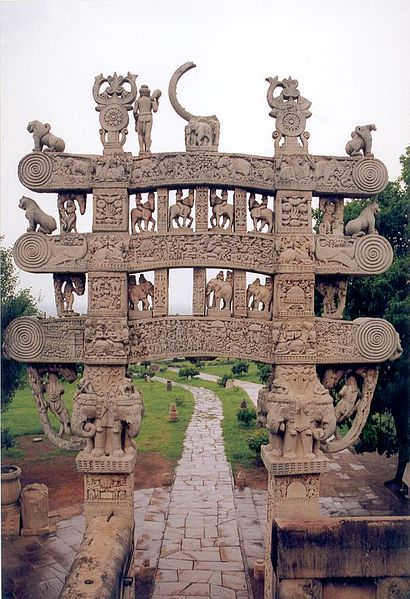
The Mathura School is considered the most ancient of the indigenous classical schools of art. Though its origins were in the Mauryan period, it reached maturity under the Shunga Dynasty and its high point under the Guptas.
Amaravati School
The Legendary Amaravati School of Art originates in Andhra. One of the 3 great Ancient Indian styles, its impact was felt not only within India (as seen in the Ajanta cave Paintings), but in many parts of Asia as well.
Gandhara School

The Gandhara School of Art is notable for combining Indigenous styles and themes with hellenistic forms and techniques. It reached its high point in the central Asian Saka and Kushana periods in Northwestern India and Afghanistan. The Ancient Janapada of Gandhara gave its name to the school.
North
Rajput Painting

Khajuraho Sculpture, Madhya Pradesh
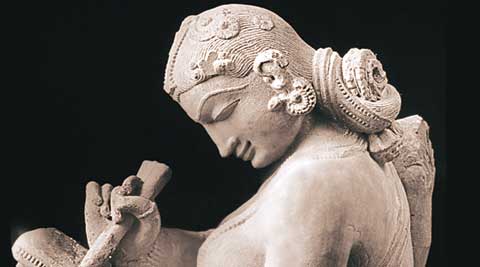
Dasavatara Temple, Imperial Gupta Dynasty, Deogarh, Uttar Pradesh
South
Chennakesava Temple, Belur, Karnataka
The Sigiriya Frescoes of Sril Lanka
 The sigiriya frescoes of Sri Lanka bear a strong resemblance of the Ajanta Cave paintings, and, as such, easily mistaken for them. Nevertheless, they are a defining part of the rich artistic heritage of the Sinhalese. While the sites dates back to the 5th century, the frescoes themselves may come from a later period.
The sigiriya frescoes of Sri Lanka bear a strong resemblance of the Ajanta Cave paintings, and, as such, easily mistaken for them. Nevertheless, they are a defining part of the rich artistic heritage of the Sinhalese. While the sites dates back to the 5th century, the frescoes themselves may come from a later period.
East
Konark

While Konark itself is UNESCO World Heritage site, it is the art of this temple that truly stands out. Dedicated to Lord Surya, the temple was constructed by the Eastern Ganga King Narasimhadeva in the 13th century.
West

Ajanta in Maharashtra is, without a doubt, one of the most splendid specimens of art in the world. The Cave paintings here date from mid-to-late antiquity. They run many dynasties, from the Satavahana to the Gupta. The frescoes here are amazingly well preserved.
References:
- Singh, Satyanarayana. The Art and Architecture of the Kakatiyas. Delhi: Bharatiya Kala Prakashan. 1999
- Basham, A.L. The Wonder that was India. New Delhi: Rupa.1999
- http://creative.sulekha.com/the-art-of-painting-in-ancient-india-chitrasutra-2_364304_blog
Architecture
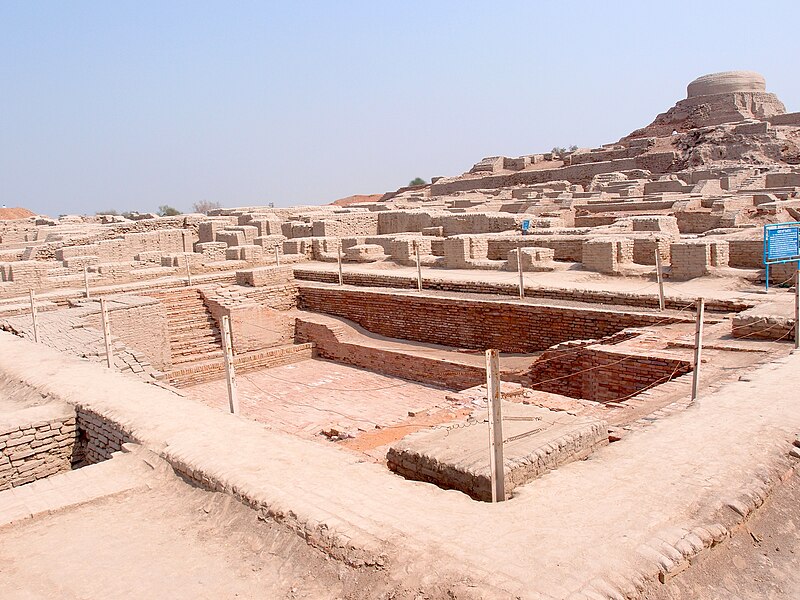
Classical
The Great Bath at Harappa is considered an engineering marvel for the time. At 30 feet long, 23 feet wide, and 8 feet deep, it was a dominant feature of the city. Bricks were sealed with gypsum mortar and wire kiln fired with a ratio of 4:2:1.
The city drainage systems were paralleled with the grid iron pattern of the avenues. The decimal system also appears to have been in use. The dominating features in the cities, however, were the citadel and the granary.
Silpa Sastra & Viswakarma

The patron deity of the Indic Fine Arts is the Vedic god Tvastr. He is mentioned in the Purusha Sukta of the Rig Veda, and is alternately associated with many deities including Savitr and even Indra. Nevertheless, he is most often considered a form of Vishvakarma.
Classical Hindu Architecture is presently divided into two main styles: Nagara and Dravida. However, closer study of traditional architectural texts show far greater variety not only in Gopurams/Sikharas but also gates, pillars, and a host of other structures and sub-structures.
Due to the sheer variety and number of Architectural gems, a snapshot only has been provided below, for later elaboration.
References:
- Singh, Satyanarayana. The Art and Architecture of the Kakatiyas. Delhi: Bharatiya Kala Prakashan. 1999
- Basham, A.L. The Wonder that was India. New Delhi: Rupa.1999
Sanchi Stupas

Sarnath

Amaravati Stupa
Frieze of the Amaravati Stupa
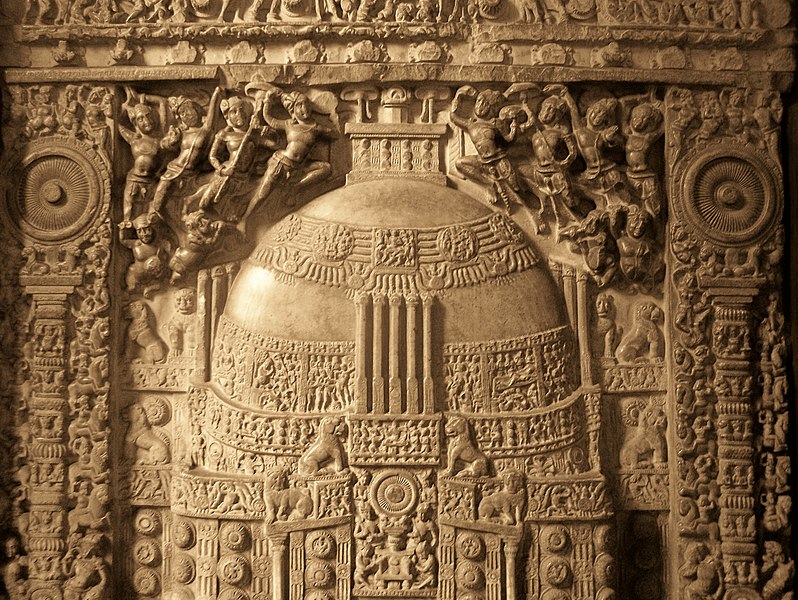
North

Marthand
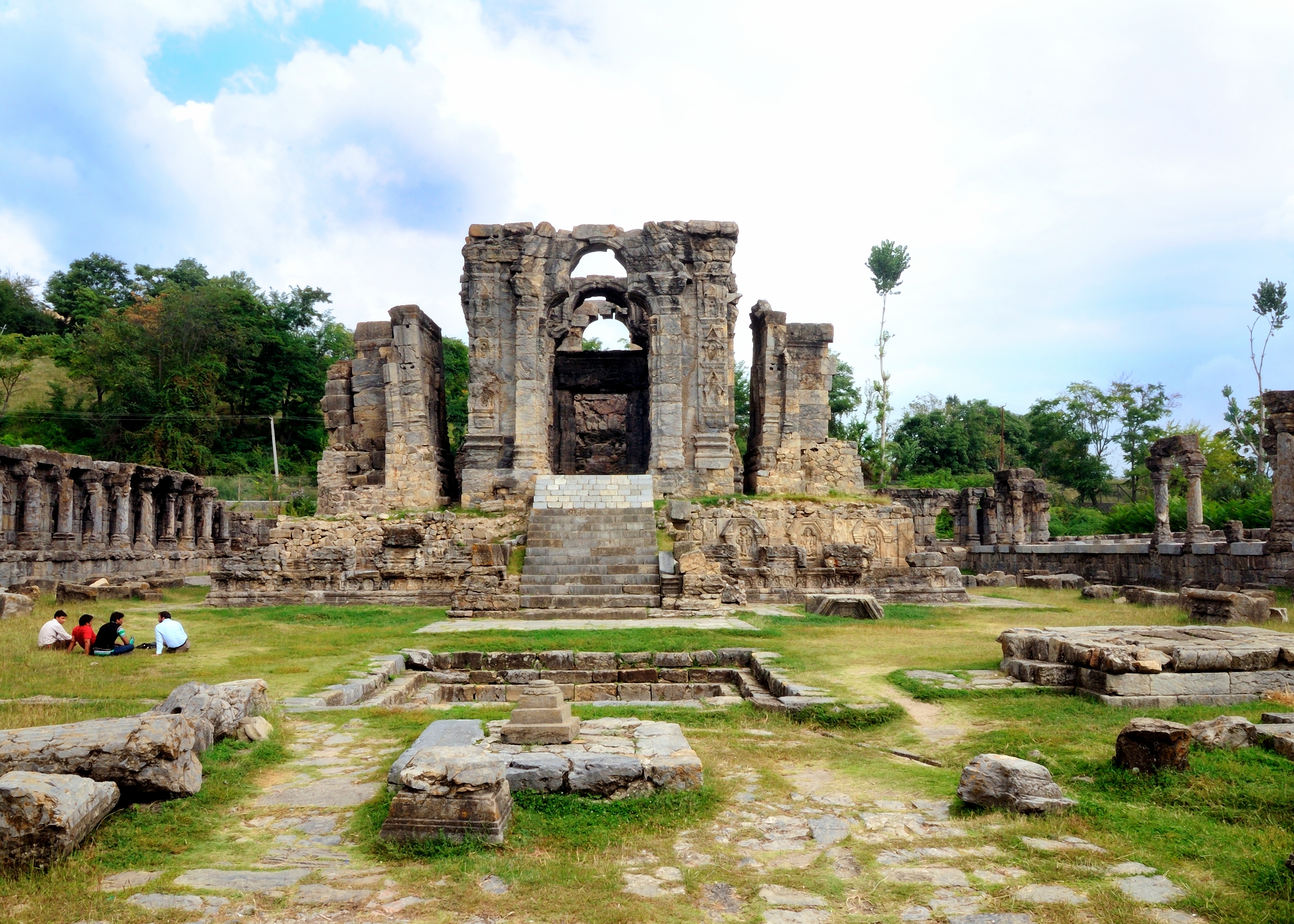
Constructed by the mighty King of Kashmir, Lalitaditya Muktapida, the once majestic Temple of Martand (in Anantnag, J&K) is in dignified ruins that touch the eyes. They are a testament to the ancient heritage and culture of Kashmir, still living today.
Khajuraho

Known throughout the world, the Khandariya Mahadeo Temple site is popularly known as Khajuraho. Located in Madhya Pradesh, it dates back to the Medieval period and is credited to the Chandella dynasty of Rajput Kings.
Harmandir Saheb (Sikh Golden Temple at Amritsar)

Recognizable to not only all Sikhs and most Indians, but many people around the world, the Sikh Golden temple is a wonderfully preserved sacred site. Dating to the late medieval period, the structure itself catches the eye, and the devotees inspire seva with their famous langar (kitchen).
Taj Mahal
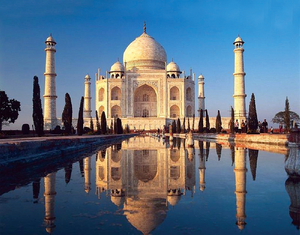
A monument that needs no introduction, the Taj Mahal is the most famous structure from India today. It is a symbol of the medieval period.
South
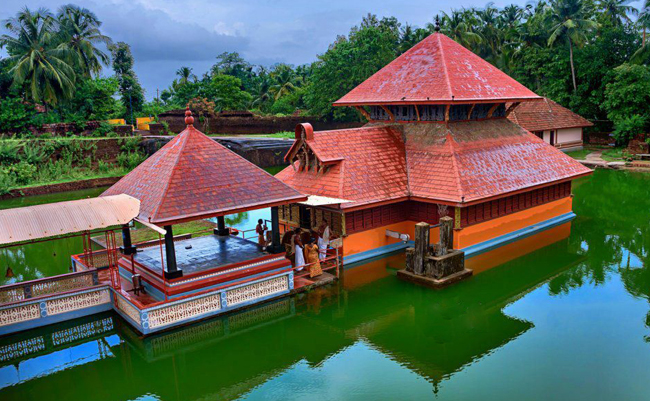
Meenakshi Temple Madurai
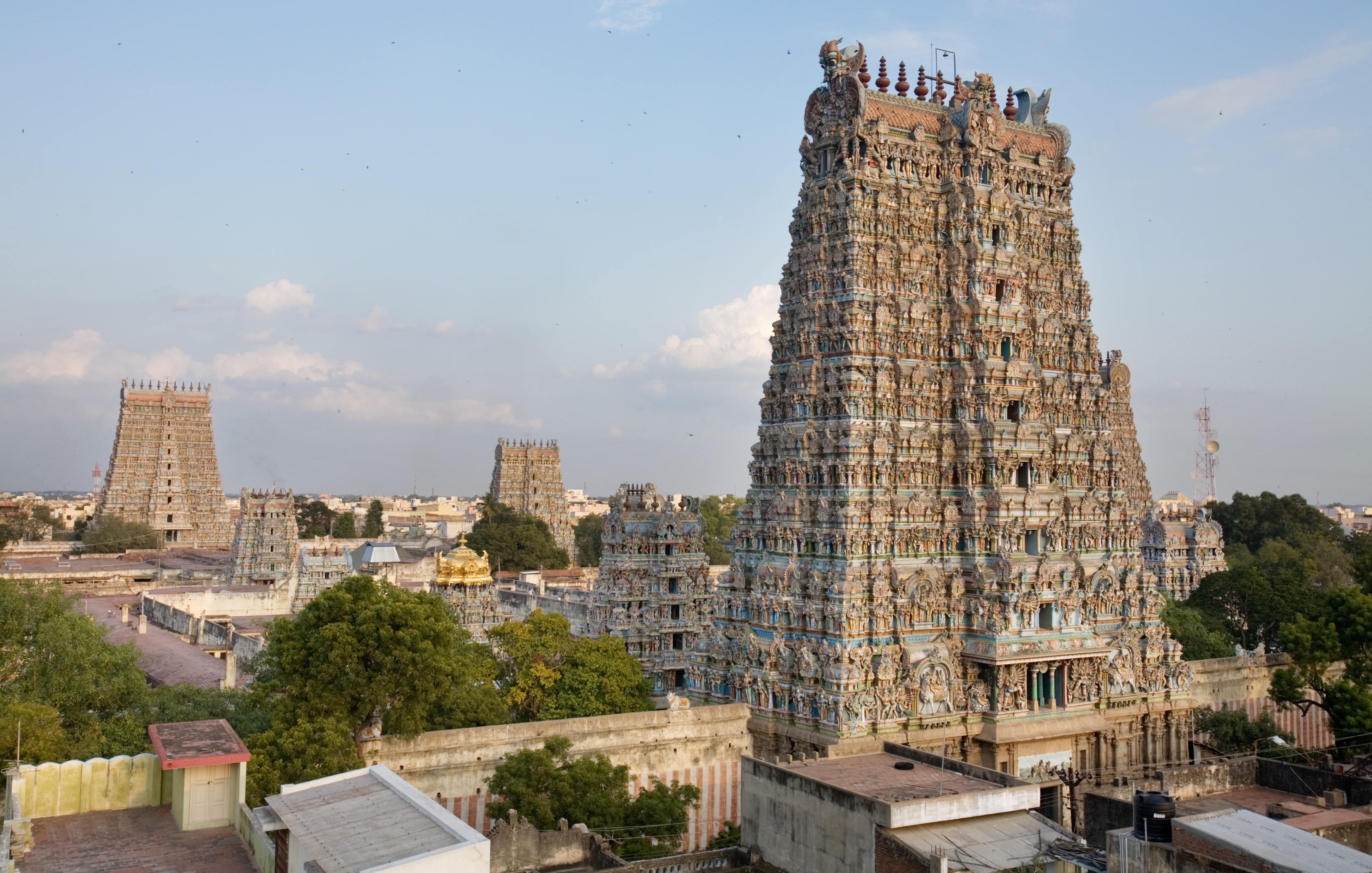
Warangal
Literally meaning “One Stone” (Oru gallu), the great capital of the Kakatiyas long stood truly as a “single rock” of Dharma defying Delhi.
Jain Temple just outside Warangal Fort
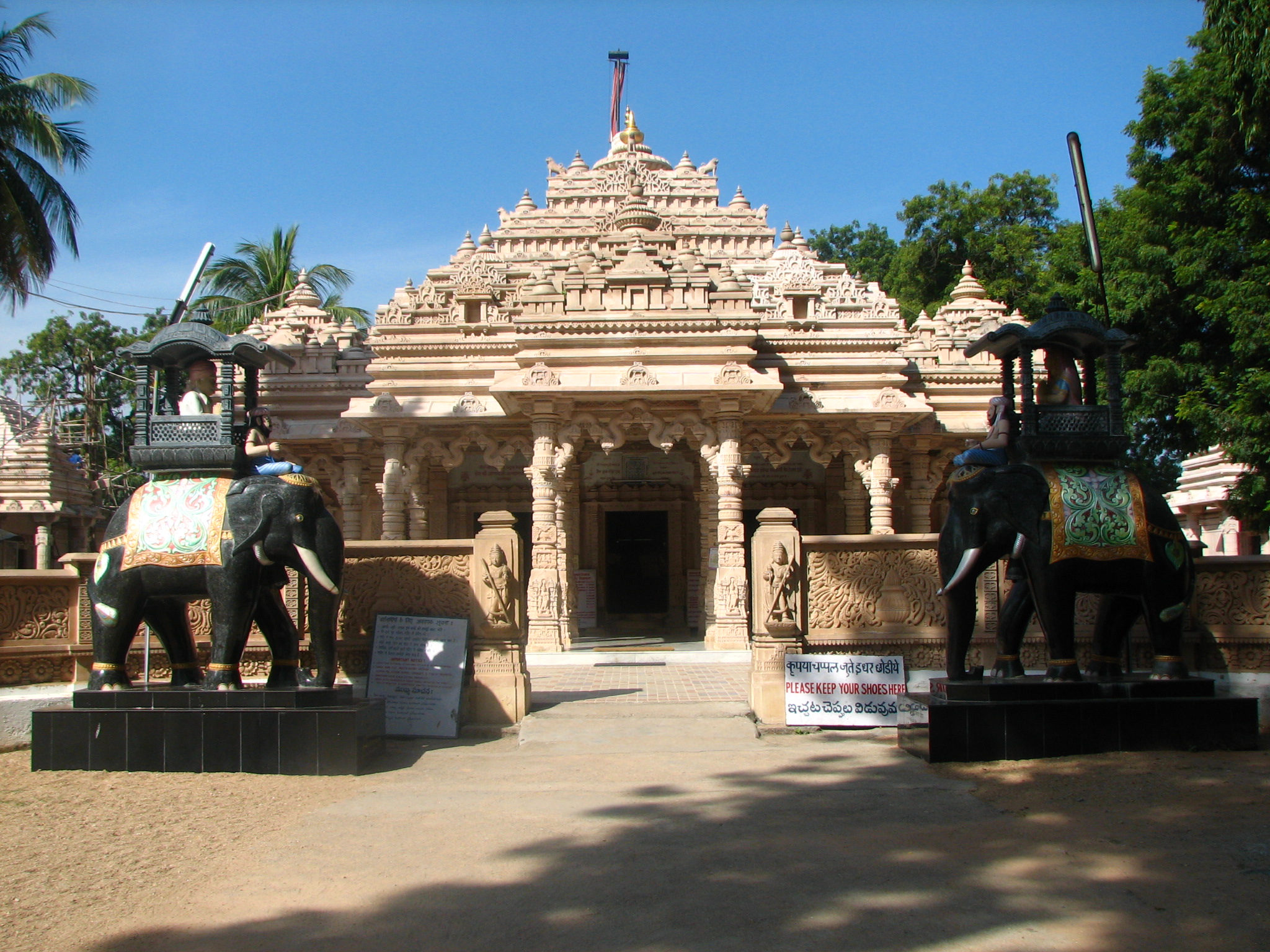
Keerthi Torana
The Trademark Warangal Torana is of course the most famous structure of the site. Indeed, it has come to define its medieval past and, as readers will see below, even its modern image.
East
Puri Jagannath Temple

A grand structure symbolizing the heritage of the Odia people, its identifiable gopuram is emblematic of their unique style of architecture. Dedicated to Lord Vishnu, it is famous for its massive chariot that originated the word “juggernaut”.
Lingaraja Temple
Yet another specimen of the Odia style of architecture, the Lingaraja temple features a similar gopuram as the Puri temple. This can be seen below.

Jor Bangla Temple
While Bengal was once teeming with temples, this cultural heart of eastern India has a few specimens to reflect that today. One such is the Jor-Bangla Temple, which dates to the 16th Century.
West
Ellora
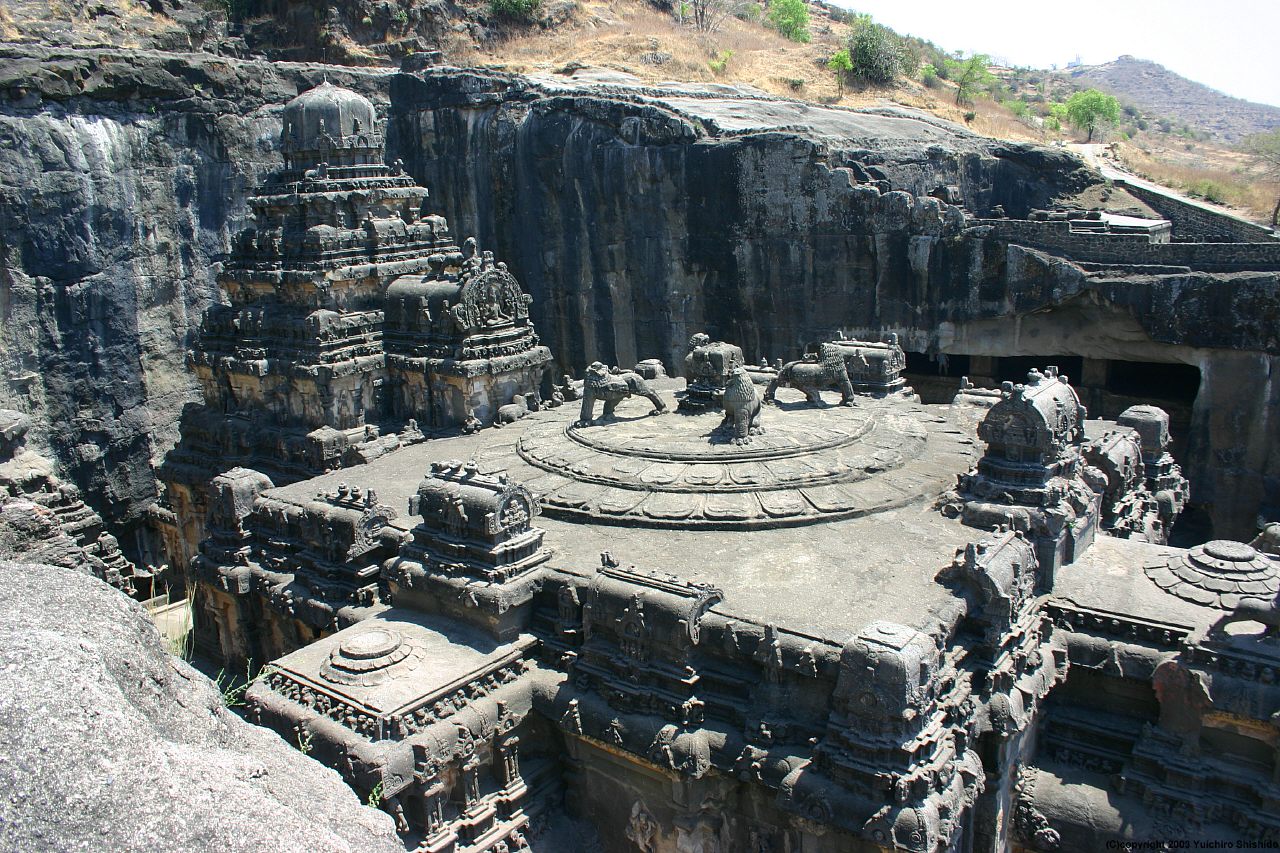
To anyone who has visited, the rock-cut cave temples at Ellora are truly amazing. Credited to the Rashtrakuta dynasty of Late Antiquity, they are a unique blend of Saiva and Buddhist motifs and styles.
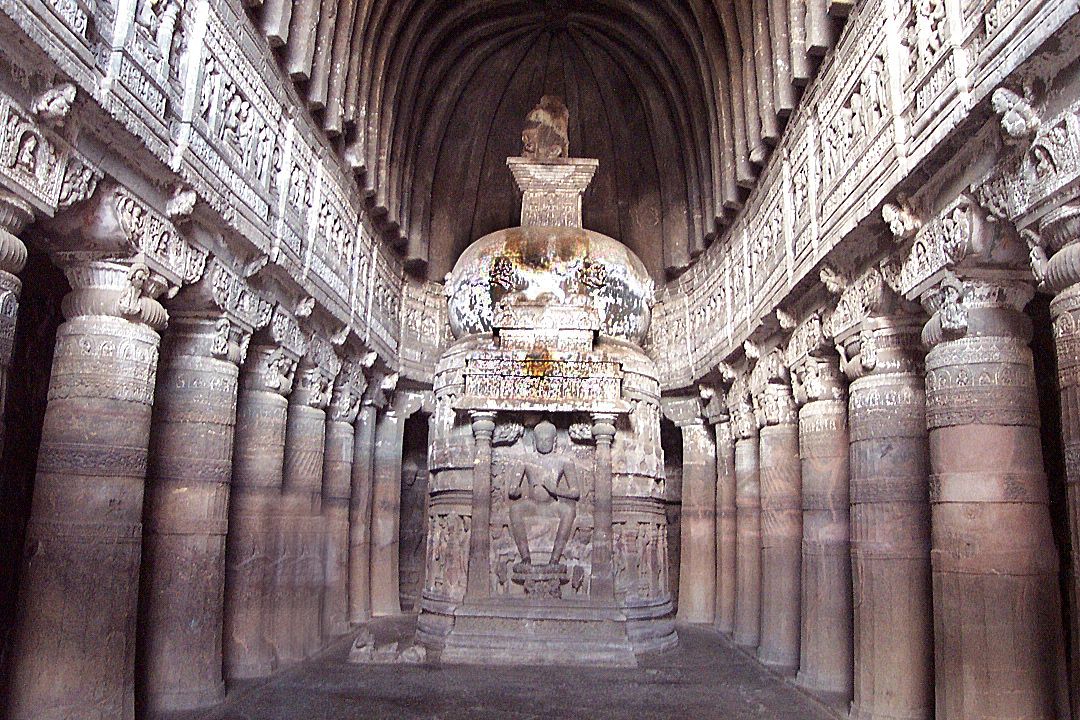
Dilwara Temple

A masterful example of Jain Architecture, the Dilwara Temple at Mt. Abu (Arbuda) is dreamy sight for architecture lovers and laypersons alike.
Exterior of Dilwara Temple, Ranakpur, Rajasthan
Somnath
Somnath Temple, Gujarat
The beautiful modern temple of Somnath (one of the 12 jyothirlingas dedicated to Lord Shiva) is a splendid testimonial to the wonder that once stood there. Destroyed 7 times, and rebuilt each time, the mandir here once famously house a magnetically levitating Shivalinga.
References:
- SarDesai, D.R. India: The Definitive History. Westview: Boulder, Colorado. 2008.p.2-48
Fashion
Classical
Fashion on the Indian Subcontinent has not been static. It has adapted to changing tastes and new ideas. The Classical Ideal is nevertheless beginning to recapture the imagination. With its sensuous designs and regal fabrics it is captivating for all to see.
Jewelry has also varied with time and place. However, certain precepts, such as the influence of astrology, colour the selection of not only gems but metals. One such example is used in modern Andhra, but clearly originates in Ancient Indic Jyotisha.
Edu Varaala Jewelry
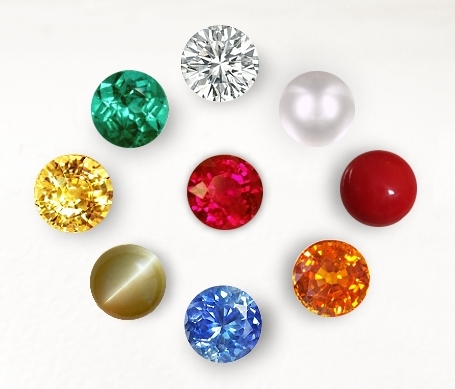
Women are gifted with a set of necklaces (pattakam), earrings (kammalu), bangles (gaajulu), rings (vungaram), nose rings (mukku pudaka), hair part dangles (papita billa), girdles (vaddaanam), anklets (gajjelu) and arm bracelets (vankeelu)that are harmonious with the astrological significance of each day.
Like Kasulaperu, the queen of jewelry, Edu Vaaraala is for all ages of Andhra Ladies. Historically, however, they were considered a marker of the aristocracy, especially the royalty. In popular folklore, it is associated with Satyabhama, one of Krishna’s wives.
Sunday is Ruby (because it’s Lord Surya’s gem). It is related to giving health and long life.
Monday is Pearl/Muthyam (because of Moon, and is pleasant to eyes). This is because Moon influences the mind and makes it steady to face the tides of life.
Tuesday is Red coral/Pagadam (because it represents Subramanya Swamy who is God of War). This is connected to health and relations.
or
Tuesday is Catseye gem/Vaiduryam (because it represents Ketu, which is mustard color). Ketu helps with the overcoming of obstacles in general.
Wednesday is Emerald/Marakatham(because the planet Budha represents business/profession and knowledge).
Thursday is Yellow Zircon/Pushyaraagam (because pasupu (turmeric) represents the Guru, who stands for wisdom). Brihaspati is the ruler of wisdom, as he is preceptor of Devas.
Friday is Diamond/Vajram (because it represents Sukra who gives Wealth and Romance) This day is most associated with wealth and romance due to Goddess Lakshmi.
Saturday is Sapphire/Neelam (because blue is the color that represents Saturn, or Seni Bhagavaan). Seni bhagavan rules the fates of mankind. If he is favorable, he can make a pauper a prince, or vice versa. His purpose is to make sure people learn their ethical lessons. So they will keep repeating difficult situations until they learn justice.
or
Saturday is Hessonite/Gomedhikam (because of the dual association of this day with Rahu, this stone is also considered). Rahu is the master of chaos and unrestrained impulse. Thus, he is also propitiated to ensure our impulses are secure.
North
Banarasi Saree
Laknau Chikankari Saree
Salwar Kameez
South
Pochampally

A village & mandal in Telangana’s Nalgonda district, Pochampally is known for its very unique print. There is more handwork involved than other sarees. It is considered the most intricate.
The most notable aspect of this saree is the Ikat weaving, which is the unique contribution of Telangana region. It is part of the common heritage of Telugus and originates specifically from Nalgonda district. While the weaving is done in a zig-zag style, the dyeing itself is random.
Saree of the Stylish lady

Narayanapeta
The Narayanapeta represents classy comfort. It is the “business casual saree”.
Woven in both silk and handloom varieties, Narayanapeta fabrics are a specialty from the Telangana region of Andhra Pradesh. Chhatrapati Shivaji is said to have entered the town of Narayanapeta during his many campaigns and brought a number of weavers with him. These handloomers decided to settle there and joined hands with the existing local weavers and infused this unique style with Maratha motifs.
The trademark of a Narayanapeta saree is that it has a triangular embroidery (sikhara) that is repeated at the border. The border itself will feature a khadi-anchu (a plain double line that strikes through the border).
“Business casual saree”
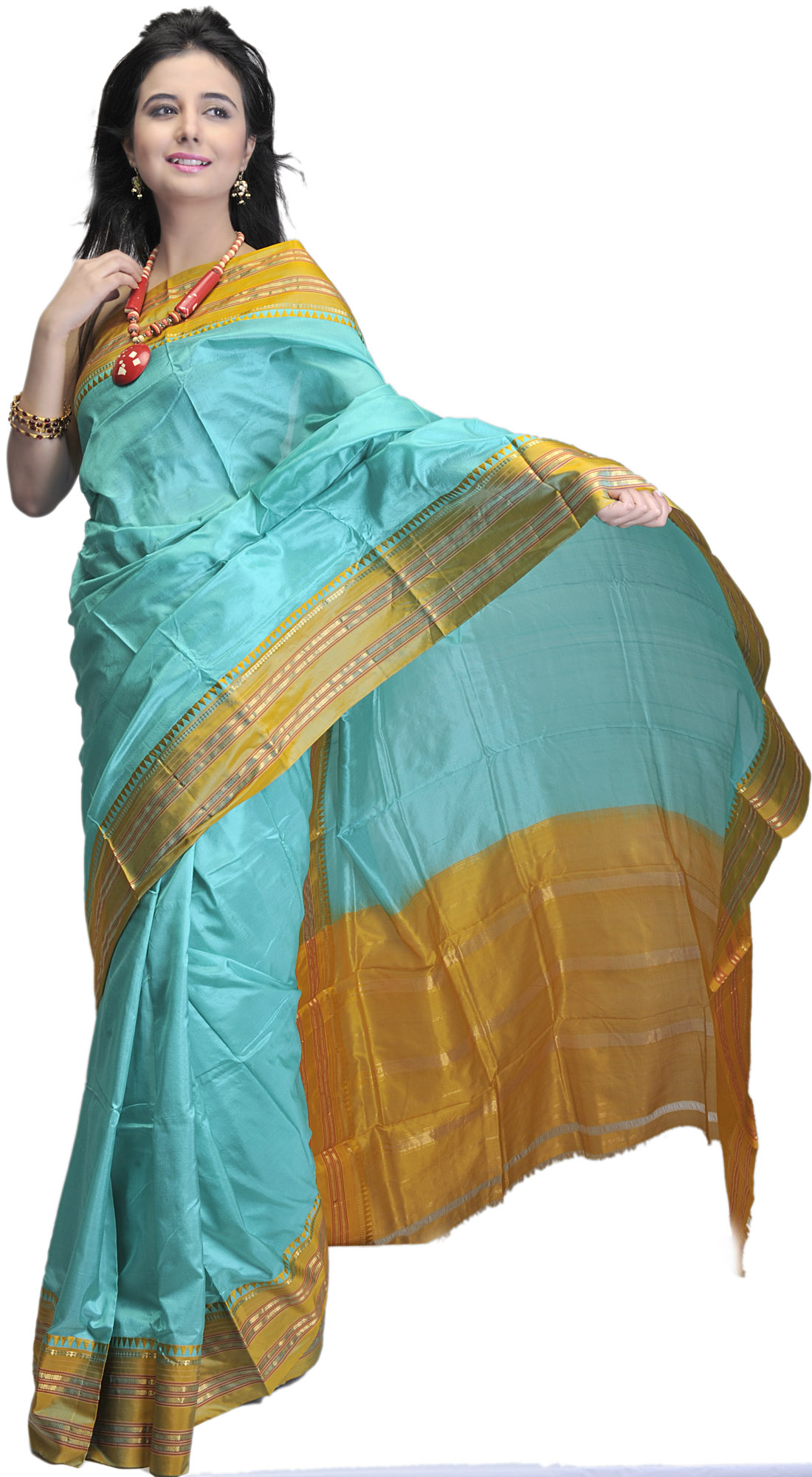
Jewelry
Kasulaperu
Also known as Kasumala, Kasulaperu (pronounced: Kaasulaperu) is the biggest name in Andhra ornaments. While common to all four regions of South India, the Kasumala style has taken a distinctly Telugu name in Kasulaperu. They have very recently become trendy, and a number of model/actresses both South and North have been seen showcasing it at functions.
The name for this necklace comes from Lakshmi coins strung together, which is very auspicious. In fact, it is so valued that it is the preferred gift to brides at Wedding. However, it is popular enough that it is a favorite for all, from little girls to elderly ladies. In fact that, the length of it is often used to indicate age.
It is considered to be very royal, and in fact, in the coin itself, both Goddess Lakshmi and Lord Venkateshwara are seen wearing Kasulaperu in each image.
Karnataka
Kerala
The set mundu is the most simple attire of a lady in Kerala but has evolved into one of the most understated, lovely, fashion statements at least in sections of Malayali society today.
The set mundu is essentially a two piece clothing worn with a blouse which has evolved to be worn like a saree in the present day. However, the origins of the garment were certainly not in the present form.
The present day blouse that most Indian women wear with a saree began to gain popularity in Kerala.
And the melmundu began to be worn over the blouse in the traditional way.
Tamizh Nadu
Kanchipuram (Conjeevaram)
East
Kolkata Sarees
Tant
Jamdhani
Tussar
Batik
Banarasi
West
Lehenga Cholis
Rajasthan
- Kota Sarees
- Bandhani Sarees
Maharashtra
- Paithani (Pratishtani)
Gujarat
- Panetar Sarees
- Patola Sarees
Festivals
Classical
Makara Sankaranthi/Pongal/Lohri
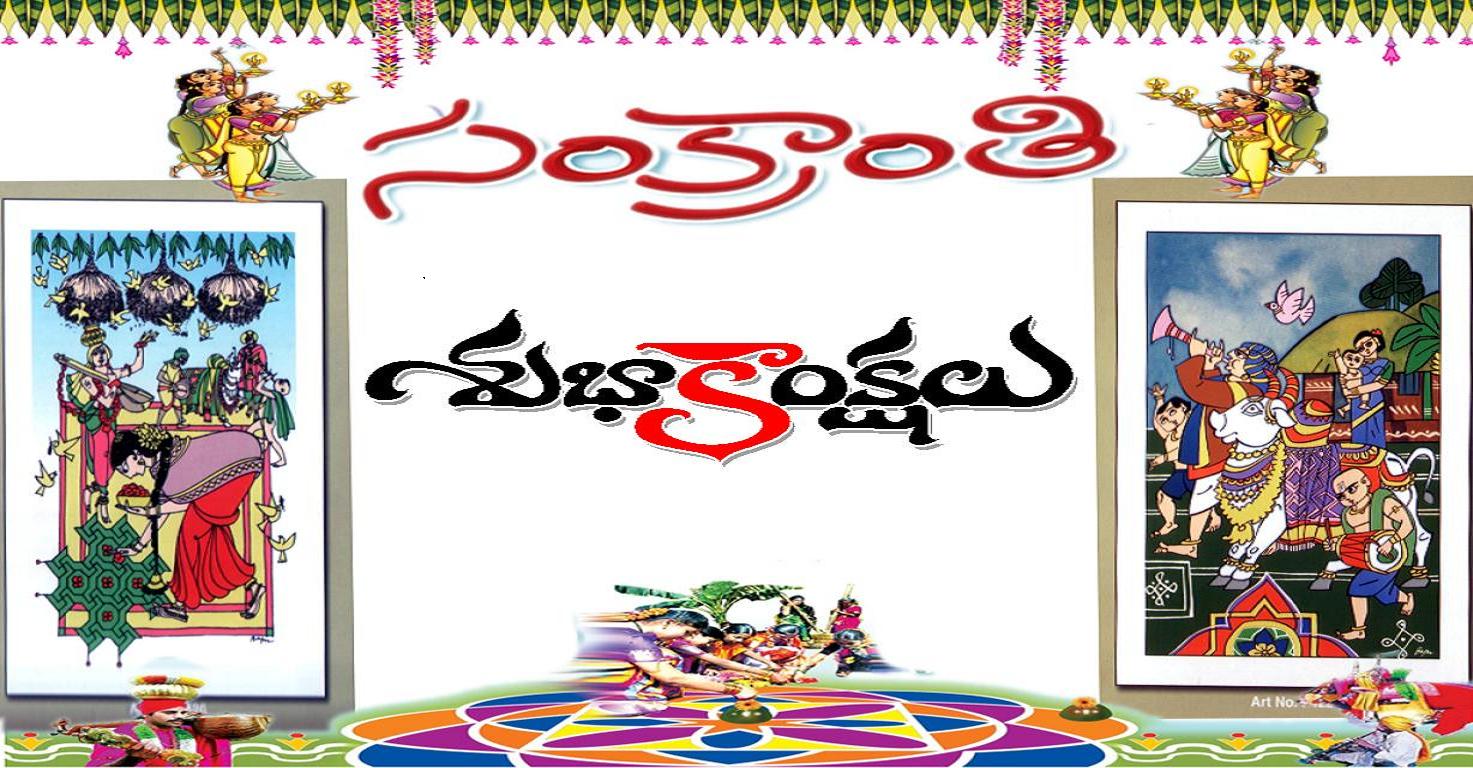
Makara Sankaranthi is the Hindu Festival marking the Winter Solstice. This is the beginning of the period known as Uttarayanam where the Sun will rise in the Zodiac until the Summer Solstice. As per Hindu astrology/astronomy, the Sun enters Capricorn, or “Makara” rasee.
It is also considered the Harvest Festival in most parts of India, and so there is great feasting. In Punjab it is called Lohri.
Maha Shivaratri
Shivatratri is associated with Lord Shiva’s Marriage with Parvati Devi.
Ugadi/Gudi Padwa or the Telugu/Kannada/Marathi New Year in March/April.
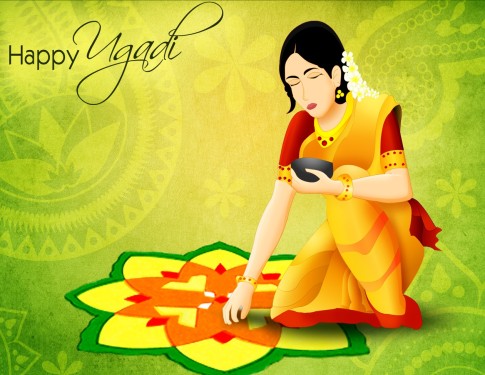
Telugu (and Kannada/Marathi) New Year is based on the sidereal calendar (combination of Lunar, Solar and Stellar positions), and begins on this day. Ugadi comes from the Sanskrit term Yuga Adi, or new era. Typical greetings include: Nutana Samvatsara Subakaankshalu or Ugadi Subakaankshalu.
Ugaadi Pacchadi (an amuse bouche consisting of the 6 flavors):Typically, the following ingredients are used: Banana (for sweet, representing happiness), Neem (bitter, representing sadness), Salt (saltiness, signifying fear), Chilli powder (spice, signifying anger), Tamarind (sour, representing disgust), & Mango (tang, representing surprise).
New clothes are also given, mango leaf arches are hung, muggu (rangoli) is done, and astrological charts for the year are read (Panchanga Sravanaalu).
Sri Rama Navami
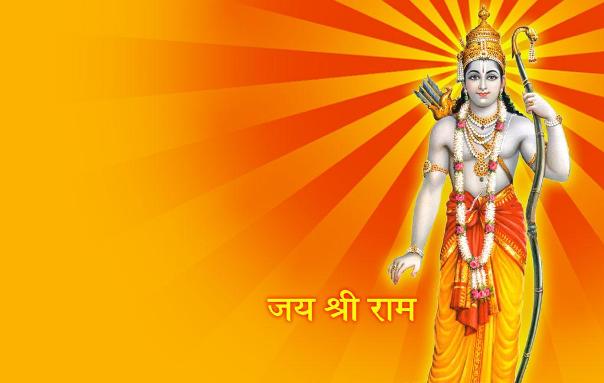
The blessed day of Bhagavan Rama’s Birth and Marriage.
Born on the 9th day (Navami) of the Month of Chaitra per the Hindu Lunar Calendar, he is the Seventh Avatara of Lord Vishnu in this Manvantara. He is the ideal man, the ideal husband, the ideal brother, the ideal father, and the ideal king.
Vasantha Utsava/Holi
Madan Utsava
Vaisakha/Baisakhi/Puthandu
Krishnashtami
Mahavir Jayanti
Buddha Purnima
Kaumudhi Utsava
Vinayaka Chavithi
Dasara/Durga Puja/Navratri-For 10 days Bhavani Mata fought Mahishasura and destroyed him on the tenth.
Deepavali
North
Holi
Chhat Puja
Rakshabandhan
Karva Chouth
South
Atla Tadde (A.P.)
Bonalu (Telangana)
Bathukamma (Telangana)
Thaipusam (Tamizh Nadu)
Vishu (Kerala)
Onam (Kerala)
East
Saraswati Puja (Bengal & Odisha)
Raj
Bihu (Assam)
West
Gangaur (Rajasthan)
Teejdi (Sindhi)
Shigmo (Konkani )
Vat Pournami (Maharashtra)
Cuisine
Classical
Indic cuisine comes in amazing flavours and varieties. It adapts to region and climate, and yet, it has managed to provide a plethora of rasas for the ancient and modern Bharatiya. Nevertheless, certain principles have managed to stand the test of time. Use of spices such as turmeric and cardamom have been consistent through the millennia.
Many native aspects of Indic cookery have been though otherwise. In fact, they may date to the Sarasvati Valley itself. An example of this of course is the famous Tandoor, and the roti and other foods it cooks. Pulao is another, originating from the sanskrit word Pulaka.
Historically, vegetarianism has had an important place in many sections. Nevertheless, there is a strong Indic tradition in non-vegetarianism as well. Go-mamsa, however has historically been taboo in most dharmic corners.
North
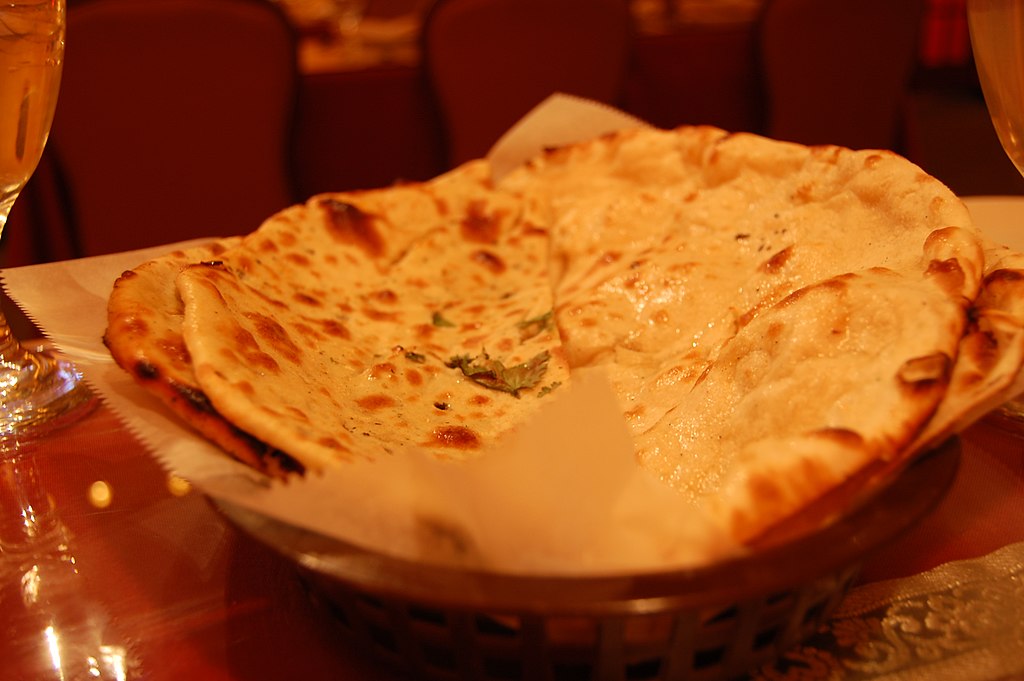
North Indian cuisine is famous for its use of breads, such as chapati/roti, parantha, and Naan. The much-vaunted style is the”Mughlai, largely Punjabi, with a somewhat liberal use of ghee (clarified butter) and the use of a tandoor “. Nevertheless, rice is also common in eastern parts.
Madhya Pradesh
References:
- SarDesai, D.R. India: The Definitive History. Westview: Boulder, Colorado. 2008.p.6
South
South Indian cuisine actually diverges into 4 main regions. Nevertheless, there are certain staples that have come to define the dakshinapatha. The staple is undeniably rice, nevertheless, various other grains can be found as well.
Rasam-A rich and mouth-watering soup that is mixed with rice. There are different varieties such as tomato and tamarind (chintapandu).
Idli-The popular south Indian breakfast food originating in Tamizh Nadu. It is made from steamed, fermented lentils and typically served with chutney or sambar.
Sambar-A thick, spicy, and savory lentil soup that is traditionally served with rice for afternoon and evening meals and idlis or dosas for morning meals. It is very rich in protein and vegetables.
Dosa-The famous fermented, fried rice-lentil crepe of South India (Udipi in Karnataka has the strongest claim to originating it). Most commonly served for breakfast or lunch with sambar or chutney, it is very frequently served with pickle.
Upma-The traditional cream of wheat dish is served for breakfast or lunch. It comes in many varieties. While many garnish it with chutney, in typical Andhra style, pickles (especially Gongura and Mango) are preferred.
Uttapam-South India’s answer to the pancake, this thick fried batter staple is commonly mixed with onions and other vegetables and spices. It is typically served with pickle in Andhra.
Garelu (Vadas)-This fried batter dumpling is an essential during Andhra festivals. Frequently mixed with onions and coriander, it is garnished with chutney or served with sambar.
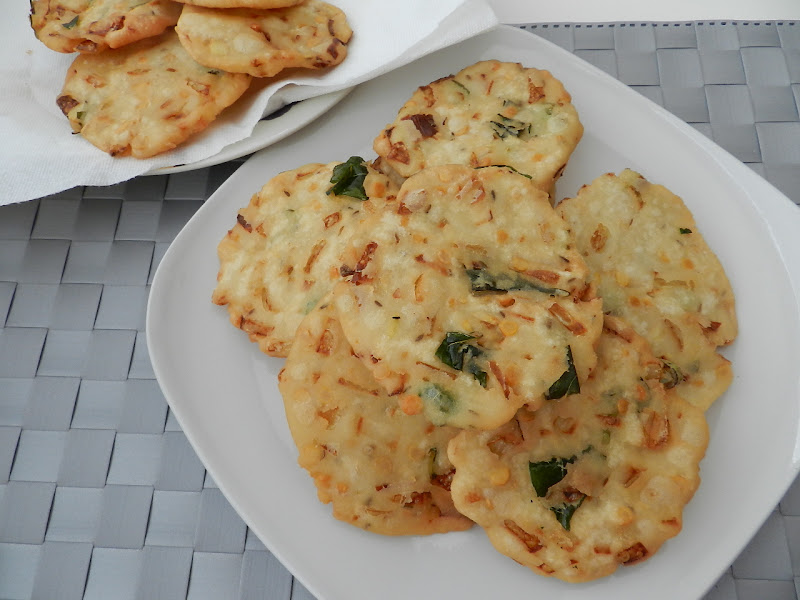
Chekkalu-Crispy flour chips
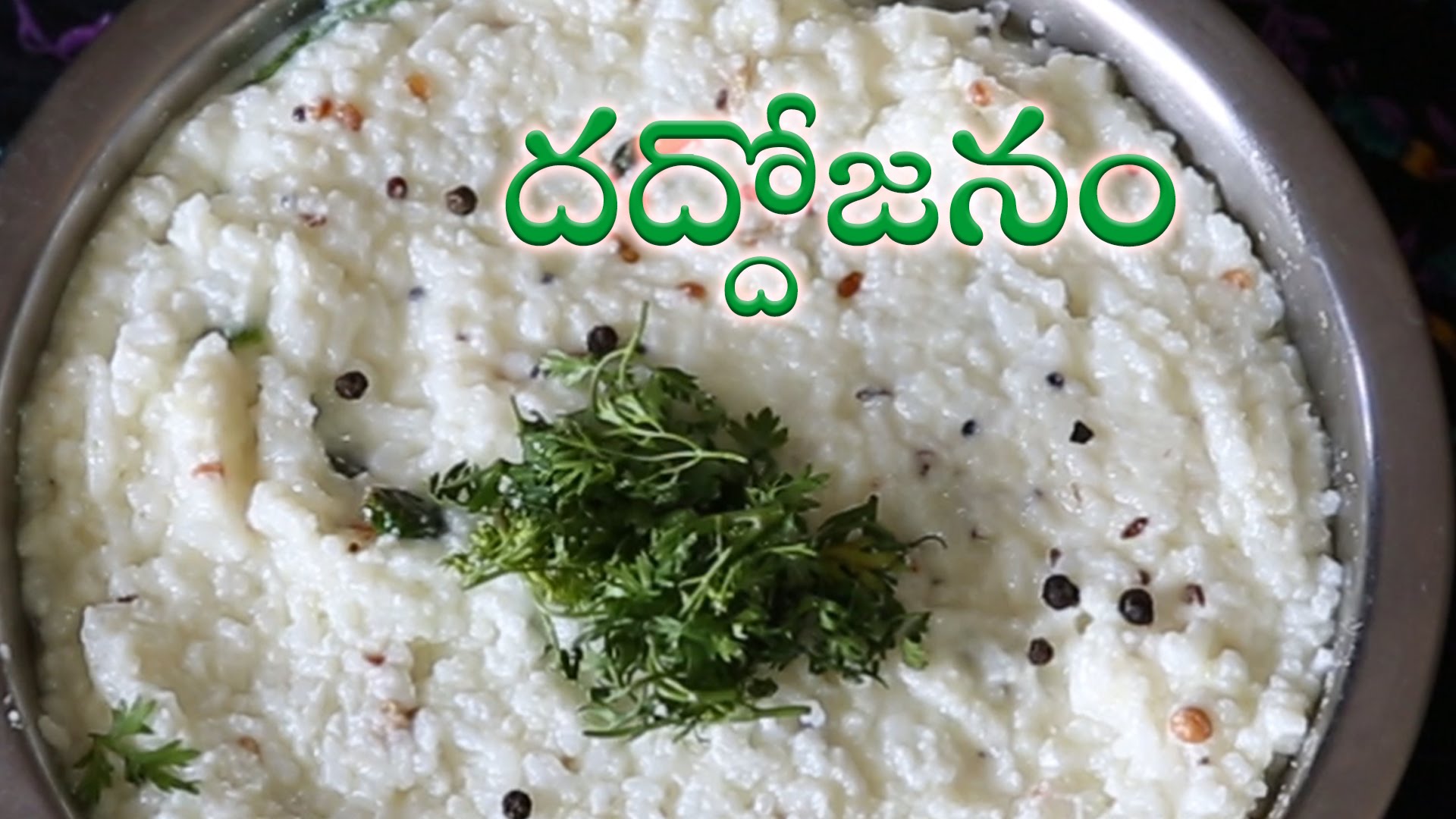
Perugu Annam-Yogurt rice, mixed with mustard seeds and usually garnished with pickle.
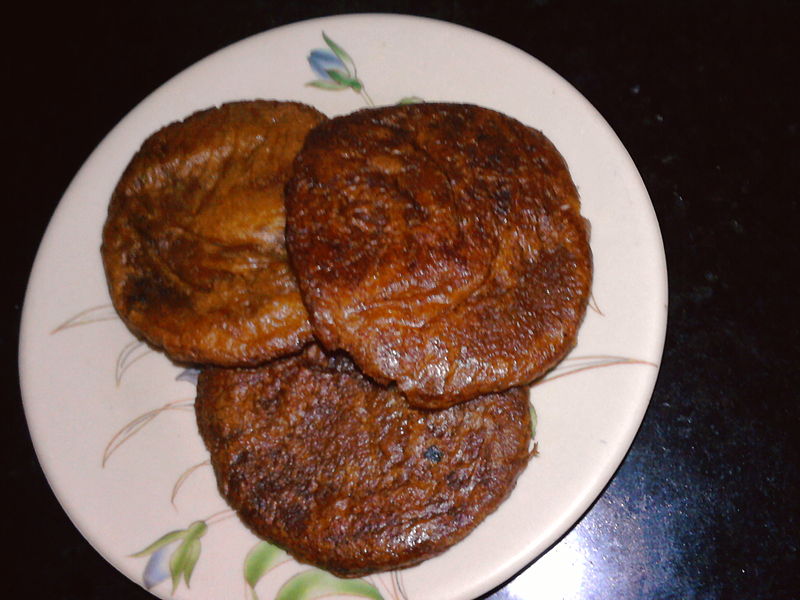
Arisalu-Flattened sweet cakes
Andhra
The region is famous for its use of pickles (uragaayya) especially Gongura (Roselle Leaves) and Avakayya (Mango) as well as Red Chillies. This makes it the spiciest cuisine in all of Bharatavarsha. Above all, however, is the Roselle Leaf, or Gongura, which is virtually synonymous with cooking in the region.
Gongura Mamsam-Andhra Roselle Leaf Mutton
Kodi Vepadu–Andhra Pepper Fry Chicken

Chaapala Pulusu-Fish marinated in a unique tamarind sauce.
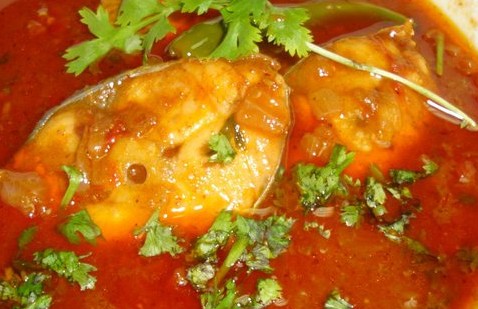
Royyalu Koora-Andhra Shrimp Curry
Sakinalu is one of the many traditional snacks made in Karimnagar district in Telangana, for Sankranti. They are made with rice flour and sesame seeds, and fried in oil.
Banganapalli Mangoes
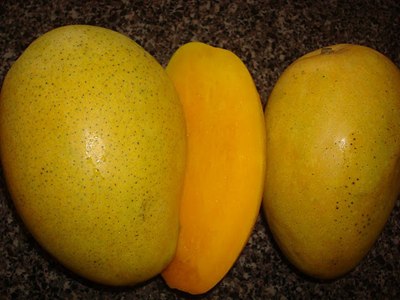
Most famous of all is the Andhra variety of Mango. The rival, and as any red blooded Andhraite would assert, the superior of the more widely known Alphonso variety, Banganapalli mangoes are (much like the Telugu language) undoubtedly the sweetest in all of India.
Karnataka
Kerala
Tamizh Nadu
East
Eastern India is famous for its fish and its sweets. But while the great rasagolla wars between Bengal and Odisha continue to rage, sandesh, mishti doi and a host of other savouries remain uncontested. States like Bihar also contribute their own unique selections such as Sattu.
West

Western Indian food is known for it vegetarianism. This is due to the large presence of Jains, as well as other orthodox communities.
Rajasthani
Gujarati
Maharashtrian
Dance
Natya Shastra
The Natya Shastra is the most ancient text on stagecraft in the world. Composed by Bharata Muni between 200 BC and 200 CE, scholars believe that it may have been written by various authors at different times, and may in fact be substantially older.
Some consider the Natya Shastra to be based upon the much older Natya Sutras. Unfortunately the Natya Sutras do not appear to have survived the ravages of time, so their existence in the present time is unconfirmed. Sage Bharata can be said to be one of the first exponents of the Natya Sutras, derived from Sanskrit texts and Vedas, Upanishads, especially Sama Veda.He is said to have inherited the Sutras from Narada, Tambura and Nandi etc., the original mythological exponents of the Natya Shastra.
The Natya Shastra is tremendous in its scope. It covers stage-design, music, dance, makeup, and indeed, nearly every aspect of stagecraft. It is critical to the musician as it is the only treatise which provides such detail about the music and instruments of the period. [2]
Natya Shastra is, rightly, named the Fifth Veda for it teaches the dramatics that form the basis for all abinayas. These are classified as the Nava Rasas. Nava Rasas are the natural feelings of a normal human being when encountered with a situation where he displays one of the nine emotions. The other reason is it instructs the aesthete or viewer with the purpose of life attaining the four goals, Dharma, Artha, Kama and Moksha.
References:
- Ghosh, Manomohan (2002). Natyasastra. ISBN 81-7080-076-5.
- http://chandrakantha.com/articles/indian_music/natyashastra.html
- http://rajivmalhotra.com/library/articles/traditional-knowledge-systems/
Classical
Bharatanatyam
Kathakali
Odissi
Kuchipudi
Andhranatyam
Mohiniyattam
Kathak
North
South
Notable Artistes:
Vempati Chinna Satyam
Vempati gaaru was instrumental in not only popularizing the dance style internationally, but universalizing it as well. Famous students of his include actresses such as Vyjayanthimala, Hema Malini & Rekha. Thus, the regeneration of classical dance in Andhra, and Andhra’s style nationally and internationally is due, in no small measure, to him.
Poetically born in the village of Kuchipudi itself to Vempati Chalammaiah and Varalakshamma, Sri Chinna Satyam (1929-2012) came from a family honored for producing nine generations of professional dancers. He initially studied under Vedantam Lakshminarayana Sastri. Indeed, it was Vedantam gaaru who first opened up the tradition to women–a policy that his most famous sishya would apply to its fullest. It was Vempati gaaru who truly aligned it with the principles of the Natya Sastra–Bharata Muni’s ancient classical work on Dance and Song.
- He received the Guinness World Book of Records title for most number of dance recitals (3000)
- Composed 180 solo dances and scripted 17 dramas in many languages
- His dance-drama works include Padmavati Srinivasa Kalyanam, Vipranarayana Cheritam, Menaka Viswamitra, and Sakuntalam
- He was awarded the Padma Bhushan in 1991
Yamini Krishnamurti

One of the great artistic luminaries of Andhra Dance is Yamini Krishnamurti. Born to a Telugu-speaking family in Madanapalli, Chittoor District, Andhra Pradesh, Mungara, Yamini Krishnamurti was raised in Chidambaram in Tamil Nadu. Her grandfather famously named her “Poornatilaka”, which means “beautiful mark on the brow of light”.
Skilled in both Kuchipudi and Bharatanatyam, she is most famous for her achievements in the latter. Indeed, some have even remarked that “Yamini was not made for Bharatanatyam but that Bharatanatyam was made for Yamini.” She is considered the most famous and accomplished Classical Indian dancer of the present era.
The great danseuse finally received the Padma Bhushan in 2001. The legendary dancer was anointed “Asthana Narthaki” (Court Dancer) of the Tirumala Tirupati Devasthanams.
East
West
Music
Classical
Classical Music has a long history in India. Though today it has come to refer to the two main school of Carnatic and Hindustani, it is in fact far more ancient. Here is a brief list of personalities and texts
Personalities
Sage Bharata
Dattila
Matanga
Abhinavagupta
Paramara Bhojadeva
Mammata
Parshvadeva
Sarngadeva
Texts
Natya Sastra
Dattilam
Brihaddesi
Silappadikaram
Natyalochana
Manasollasa of Somesvara III
Abhinava Bharati
Carnatic
At this point let’s do a little more study of classical music. Carnatic music is made up of 72 fundamental ragas called the melakarta ragas or the janaka (giving birth) ragas or the parent ragas. All other ragas, and there are literally hundreds of them are derived (janya or given birth to) from these 72 janaka ragas. It just means that there are 7 swaras with 12 semi-tones in one octave. They are both in the ascending and descending scales combined in different ways to form these primary 72 ragas, i.e, these 72 ragas have the entre scale (Sa-Ni with their semi-tones) both in the ascending and descending scales. Hence they are called sampurna (complete) ragas. Janya ragas however are derived from these 72, meaning that they have have swaras left out from the parent. The number of swaras left out from the parent janaka raga can vary.
The trinity is a group of three composers who are known as the creators of almost all the compositions that are sung today. They are Muthuswami Dikshitar, Syama Sastri, and Thyagaraja.
References:
- http://www.ragasurabhi.com/carnatic-music/raga-comparisons.html
- http://www.shabda.co.in/?q=node/65
- Concert Format Sequence – Carnatic Music
Personalities
Purandara Dasa
Annamayya

His most famous works being Kondellalo nellakonna and Adivo. Annamayya’s true greatness however was his message of universality and God’s love for all. Not only did he open up Vedic education to women, he actively pushed to throw open Temples to even the lowest classes–because God himself would not go to the Temple where is devotees were denied.
Muthuswamy Dikshitar
Syama Sastri
Thyagaraja
Thyagaraja was born as Kakarla, Thyagabrahmam in a Telugu Brahmin family that migrated to Thiruvaiyaru from Prakasam district in 1767. He received his early music lessons from his guru Sonti, Venkata Ramanayya.
Thyagaraja is foremost among prominent Telugu vageyakaras whose compositions are popular not only among Telugu speaking people but across carnatic music lovers and devotees in south India. He is considered as one of the trinity of Carnatic music along with Syama Shastri and Muthuswamy Deekshitar. Of the 3 greatest composers of the Carnatic Tradition, Thyagaraja (pictured in center) is the most famous and celebrated.Among his greatest and most popular Krithis are“endaro mahanubavulu”, “sadhincene O manasa”, “kana kanar rucira”, “raga sudha rasa” and “jagadananda karaka”. See here for a full list of compositions
M.S.Subbulakshmi
Balamurali Krishna
Balamurali Krishna is an Andhra legend. Along with Thyagaraja, Annamacharya, & Bhadrachalam Ramdas he is undoubtedly one of our greatest classical composers. His stamp on the Classical Indian Music tradition is undeniable, and he remains a stalwart of the Carnatic School.
Born in Sankaraguptam village in East Godavari District, Mangalampali, Balamurali Krishna was raised in a family of musicians, as his mother was a skilled veena player, and his father a well known flautist and violinist. Balamurali gaaru, however, was destined to be a legendary singer.He was not only a creator of ragas and a classical singer and composer, but a playback singer as well.
Exceedingly versatile, he sang in a number of languages beyond his Theeyamaina Tenugu, including Hindi, Tamil, Kannada, Punjabi, English, and even French. His work in the latter even earned him Chevalier des Artes from France. He has given over 25,000 concerts in more than 75 years of performing.
His classical kritis (compositions) number over 400 in Sanskrit, Telugu, and Tamil. He innovated the ragas Sarvasri, Lavangi, Sumukham, and Mahati, picking up where Thygaraja himself left off.
Northern Pre-Hindustani
Gopala Nayaka
Maharana Kumbha
Meerabai
Hindustani
Tansen
Bhimsen Joshi
Hariprasad Chaurasia
Ravi Shankar
Playback
North
Kishore Kumar
Mohd. Rafi
Udit Narayan
Kumar Sanu
South
Ghantasala
S.P.Balasubramaniam (S.P.B.)
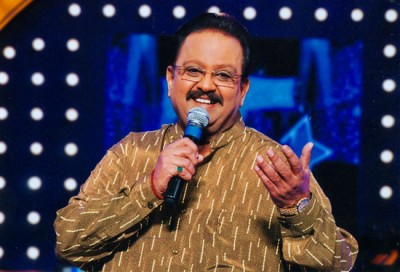
The most famous playback singer in Andhra history, S.P. Balasubramanyam is famous throughout India and among Indians around the world. The Nellore native is a peerlessly prolific song-artist and a prodigious talent. Indeed, the sweetness of his deep voice is matched only by the sweetness of his mother tongue Telugu, which he loves.
He was recognized by the Guinness World Book of Records for recording the highest number of songs (over 40,000) as well as most songs recorded in a day (21 for Kannada). SP has sung in a plethora of languages including Telugu, Tamil, Kannada, Malayalam, Hindi, Tulu, Oriya, Assamese, Badaga, Sanskrit, English, Konkani, Bengali, Marathi and Punjabi. His facility with singing in so many bhashas comes from his willingness to take an interest to learn and respect each one in which he sings.
S.Janaki
P.Susheela
Ilaiyaraja
A.R.Rahman
East
West
Asha Bhosle
Lata Mangeshkar
Cinema & Theatre
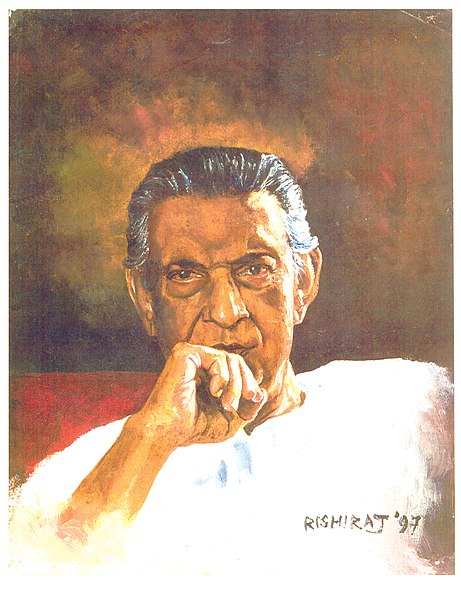
Classical
Raja Harishchandra (though technically a Marathi language film, it was the first Indic cinema and was classical in theme and ideal.) It was completed in 1913 by Dadasaheb Phalke.

Maya Bazaar

Any mention of Telugu Cinema, indeed Indian Cinema itself, would be incomplete without reference to the inimitable 1957 epic Family Drama & Comedy Maya Bazaar.
Without a doubt the most beloved Telugu movie of all time, it is the quintessential Andhra approach to the Mahabharata. Much like our irreverent culture of wit, this classic was a light-hearted take on the otherwise serious subject matter from India’s eponymous National Epic (the initials of which it coincidentally shares). One of the unique feats of Maya Bazaar was to honestly treat what is likely the most analyzed and re-told work in classical Indic literature on the basis of the vibrant folk artforms of the Dakshinapatha. It is attributed to the Harikatha tradition of Andhra and the plays of Maharashtra/Karnataka.
While this episode regarding Abhimanyu’s marriage to Sasirekha is not strictly canon per the authoritative Vyasa original, it nevertheless manages to remain in harmony with the authentic edition, whatever the veracity of the content. What’s more, it takes this Civilizational masterpiece and presents it in a uniquely Telugu tradition of cheeky humor and sophistication, with a heart of gold (or culture without condescension).
This film managed what few “phillims” manage to do, which is to deftly weave comedy with serious subject matter. Indeed, none represents this more than the commanding characterization of Ghatotkacha by Sri S.V. Ranga Rao.
While its unmatched all-star cast of NT Rama Rao, Akkineni Nageshwara Rao, Savithri, Gummadi, and Relangi all compete with one another in their performances, it is ultimately S.V.Ranga Rao who steals the show for all time.
Ramanand Sagar’s Ramayan serial (1987)
B.R. Chopra’s Mahabharat serial (1988)
Adi Sankaracharya film
North
Ayodhya ka Raja (1932)
Kisan Kanya (1937)
Do Bigha Zamin (1953)
Mother India (1957)
Pyaasa
Awaara
Mughal-e-Azam
Sholay
Deewar
Siddhartha
Nagina
Khuda Gawah
Mr. India
Lamhe
Dilwale Dulhania Le Jayenge
Karan Arjun
Kabhi Khushi Kabhi Gham
Swades
Chak De India
Notable Artistes:
Actors
- Prithiviraj Kapoor
- Guru Dutt
- Dilip Kumar (Yusuf Khan)
- Raj Kapoor
- Dev Anand
- Shashi Kapoor
- Rajesh Khanna
- Amitabh Bachchan
- Dharmendra Deol
- Anil Kapoor
- Salman Khan
- Akshay Kumar
- Shah Rukh Khan
- Hrithik Roshan
Actresses
- Zubeida
- Meena Kumari
- Madhubala
- Waheeda Rehman
- Hema Malini
- Nargis
- Rekha
- Jayaprada
- Sridevi
- Smita Patil
- Madhuri Dixit
- Nandita Das
- Urmila Matondkar
- Aishwarya Rai
- Priyanka Chopra
Notable Directors:
Dadasaheb Phalke
Ardeshir Irani
Mehboob
Bimal Roy
V. Shantaram
Shekhar Kapoor
Sanjay Leela Bansali
Punjabi:
South
Telugu:
Maya Bazaar (See above)
Missamma

A Telugu story that very much cuts across caste and creed, it is a tale of a Christian girl who falls in love with a Hindu boy, and the subsequent situational comedy that ensues. The fundamental centrality of Dharmic Indian culture is very clearly seen not only in story, but in the showcase of both classical Indian music and dance.
But the true standout aspect of this 1955 Romantic Comedy is that the protagonist and central character is a woman, masterfully played by the original Top Actress of Tollywood: Savitri. The object of her affection is none other than the legendary NT Rama Rao himself, clearly at the peak of his powers here. Both play unemployed young, unattached graduates on the make, seeking to make a life for themselves.
This movie is responsible for launching one of Telugu Cinema’s greatest artistes, the actress Savitri. It’s very much a modern story in a modern (vs post-modern) setting, all while remaining undeniably Indian in its inspiration and essence.
Paathaala Bhairavi
Listed as one of the 100 Greatest Indian movies by IBN and one of India’s four entries in its first International Film festival, it has comedy, romance, action, and yes, even a tantrikudu (practitioner of black magic).
In many ways, this film was a trend-setter. It was among the first Telugu, and possibly even Indian movies, to have a high production value with impressive sets and what was, for the time, notable special effects.
In that sense, what makes this cinema worthy of mention in our Andhra high culture was that even though it did not emerge directly from our religious epic tradition, it managed to weave various traditional themes or rasas like Sringara (the romantic) & Bhayaanika (the fearsome) in the context of our cultural and civilizational tradition and setting–as well as recount an engaging story.
Less known, however, are some of the quality Romantic couplets suavely delivered by a clever NTR.
Magadheera
Baahubali
Kannada:
Sathi Sulochana
Kerala:
Marthandavarma
Maranasimhasanam
Drishyam
Tamizh:
Keechaka Vadham
Kalidas (1931-first talkie)
Notable Artistes:
Nandamuri, Taraka Rama Rao (NTR)
Akkineni, Nageshwara Rao
S.V.Ranga Rao
Savitri
Tamizh:
M.G.Ramachandran
Ramaswamy “Gemini” Ganesan
Kamal Haasan
L.Vijayalakshmi
Kerala:
Mammooty
Karnataka:
Rajkumar
Vishnuvardhan
Sudeep
Notable Directors
R Nataraja Mudaliar
P V Rao
Kadiri Venkata Reddy
K Balanchander
Adoor Gopalakrishnan
Mani Ratnam
Ram Gopal Varma Penmatsa
Nagesh Kukunoor
S.S.Rajamouli
East
Bengali
Devdas (1935)
Pather Panchali
Aparajito
Apur Sansar
Mahanagar
Charulata
Nayak
Notable Artistes:
Mithun Chakraborty
Notable Directors:
Rustomjee Dhotiwala
P.C.Barua
Satyajit Ray
- Shatranj ke Khiladi-Though in Hindustani rather than Bengali
Shyam Benegal
Odia
West
Gujarati
Marathi
Rajasthani
References:
- http://www.cinemaofmalayalam.net/his_indian_cinema.html

